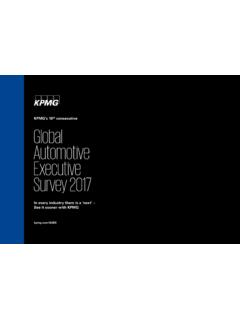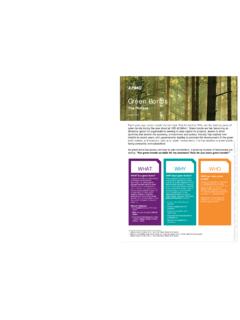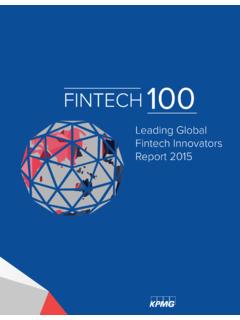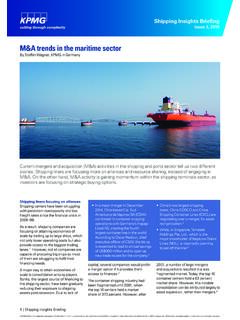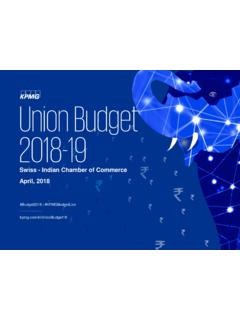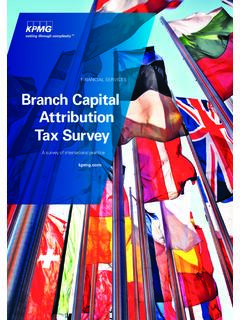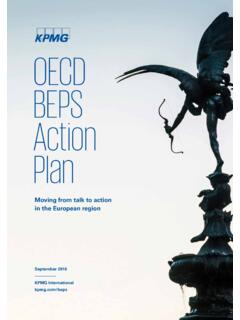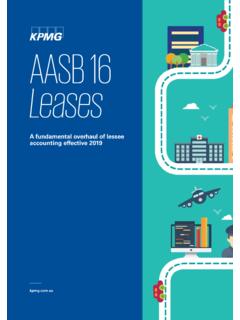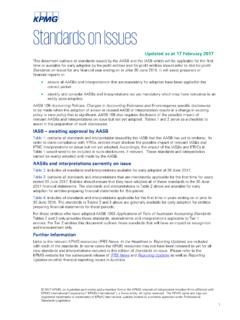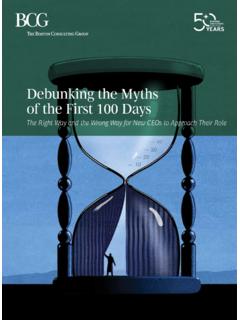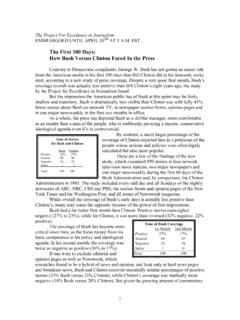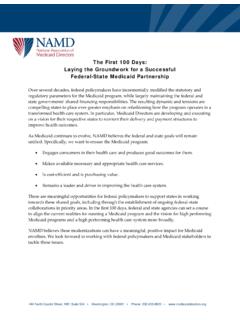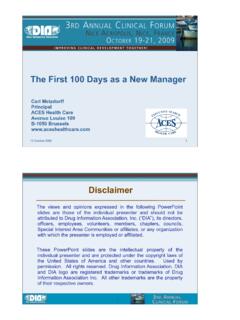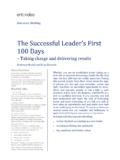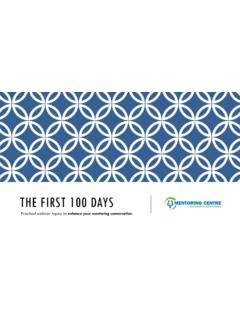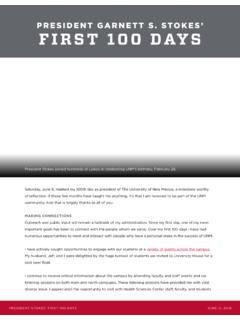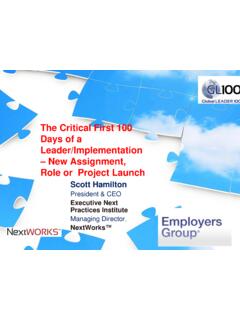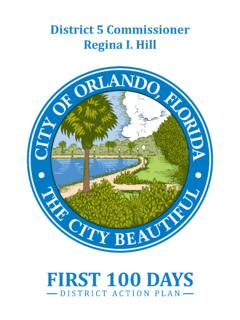Transcription of Chief Procurement Officer The first 100 days - KPMG | US
1 Chief Procurement Officer The first 100 days Charting and navigating the path to sustainable successKPMG IntroductionCongratulations! You ve landed the role of Chief Procurement Officer (CPO). Now the work begins in earnest. With an average tenure of years,1 a new CPO is in the proverbial corporate hot seat and under immense pressure to deliver immediate improvements and cost savings and to be seen as an enabler to an organization s growth and change agenda. According to KPMG s 2017 Global CEO Outlook,2 one in four CEOs (26 percent) expects their business to be transformed into a significantly different entity within 3 years down from 41 percent in 2016. This data point at first appears to go against CEOs stated drive for disruptive innovation.
2 Yet a closer reading of the data suggests that the picture is more nuanced. We see CEOs appetites for transformation varying markedly by region, due to local market pressures and geopolitics. Respondents in China, India, Australia and Japan are more likely to expect their businesses to become significantly different entities within 3 years; those in the US and Europe are less likely to expect this. Organizations must respond to and, more importantly, set and execute strategic plans that meet the opportunities and challenges presented by external factors and disruptors, particularly in areas of accelerated change such as technological innovations and the rise of the new customer. Furthermore, according to KPMG s Demand Driven Supply Chain , these new customers are more connected, informed and empowered, and continually demand more choice of product flexibility and speed of service.
3 3 So what does this mean for your role as the new CPO? KPMG member firms have had the benefit of working across boundaries, geographic and organizational, supporting CPO s to establish themselves up, build and maintain a momentum in the transformation journey. Regardless of how you came to this position, through internal promotion, as a lateral hire, or a lateral move, or even what you aim to do after your time in this role, the challenges faced by a CPO at any time, can be exacting. This paper aims to capture the learnings and create aspects for a CPO to remember in navigating and guiding their first 100 days of the new job, new structure, or new transformation objective. The journey begins with three key aspects.
4 The basis of the first 100 days lies in understanding, managing and developing the way Chief Purchasing Officers Mobility and Compensation: A Study of Fortune 500 Firms, CAPS Research, 20142 Disrupt and grow. 2017 Global CEO Outlook, KPMG International, 20173 Demand Driven Supply Chain : A direct link to profitability, KPMG International, 201623 2017 KPMG International Cooperative ( KPMG International ). KPMG International provides no client services and is a Swiss entity with which the independent member firms of the KPMG network are The first 100 days 2017 KPMG International Cooperative ( KPMG International ). KPMG International provides no client services and is a Swiss entity with which the independent member firms of the KPMG network are : Three key aspects a new CPO should focus on06 Understand the business culture, the requirements and stakeholders07 Manage the communication, business expectations and change14 Develop the compelling vision and plan16A month by month approach18 Key Lessons20 Conclusion22 How KPMG can help you?
5 2345 2017 KPMG International Cooperative ( KPMG International ). KPMG International provides no client services and is a Swiss entity with which the independent member firms of the KPMG network are The first 100 days 2017 KPMG International Cooperative ( KPMG International ). KPMG International provides no client services and is a Swiss entity with which the independent member firms of the KPMG network are : Three key aspects a new CPO should focus onProcurement is a strong enabler to drive an organization s growth and change agenda. Understanding and influencing stakeholders, instigating change, safeguarding its sustainability and ensuring the people in your team are capable and able to meet their objectives, has become an increasing part of a CPO s has the potential to drive significant value for an organization, making the first 100 days for a new CPO critical in building credibility and support of an agenda that is aligned to business needs and expectations.
6 The global experience of KPMG professionals across hundreds of transformational change journeys, suggests that a new CPO should focus on three key aspects understand, manage and develop. These aspects are interrelated and may run in parallel and vary in the level of focus over the course of the first 100 days and your Culture The Role The StakeholdersUnderstand the business culture and context, the scope and requirements of your new role, and the needs and wants of your stakeholders across the business. Understand how change is implemented and sustained. Take the time during this phase to truly listen and understand the context. Every organization is different. Your Agenda Performance Metrics Resources NeedsDevelop a compelling vision and robust plan that builds support across the organization in line with overarching strategy.
7 This includes, assessing your team s capability and defining measures of success required to implement the transformational change agenda. Change is a continual process, which will require your change agenda to be constantly reviewed and refined over time, considering any new information or obstacles that present themselves throughout your journey. 6 CPO The first 100 days 2017 KPMG International Cooperative ( KPMG International ). KPMG International provides no client services and is a Swiss entity with which the independent member firms of the KPMG network are Business Expectations Changes ManagementManage the business expectations and continually refine your key messages. There will be plenty of opportunity to shape the role and move Procurement forward, but during the manage phase it is critical to align and to set (or re-set) stakeholder expectations on what you will and won t deliver and set a plan to manage the change.
8 This will involve balancing the commercial, business and experience requirements with the needs of your customers and your internal stakeholders. Parallels can be drawn to the challenge that organizations face in engaging and responding to the business culture, the requirements and stakeholdersPrior to any change, it is critical to understand the environment and the business context. This is relevant for all new CPOs and moreover anyone new to a role. In the case of an internally promoted CPO, you may think you understand the business and culture. However, depending on your level in an organization, the culture and your perspective can be very different. Be aware that your stakeholder s perspective will change when dealing with a decision-maker and influencer in the C-Suite and be prepared to adjust your perspective on how to manage change.
9 There are three broad areas to consider: Understand the culture. The CPO needs to understand organizational norms to adapt your behavior and style. ALM research cites the importance of attending to the organization structures and the accountabilities that govern decision-making and the norms and mechanisms that enable coordination and collaboration. 4 The consequences of not following this approach may result in structures dictating rather than enabling strategies. 5 In a 2016 global survey of 1600 senior executives, 28% acknowledge that their existing organizational structure is a barrier to executing business In practice, understanding the culture involves recognizing what drives your people and organizational units; the formal and informal hierarchy within the organization; the organization s pace; how problems are escalated and solved; and how change is implemented and maintained.
10 Be brave and listen. Truly, listen to all types of people in your organization, from the CEO, to the line operator, to the intern. Consider their viewpoints and what has helped shape them, but be wary of forming solid opinions, as with time and as you build trust, more information will be made available to you to shape your perspective of the way forward. Understand the role. Understand the CPO role and responsibilities, which may involve understanding the structure of the Procurement function; its place within the organizational hierarchy; the perceived value by the organization; and the expectations of superiors and other senior staff. In a KPMG global survey of over 2,500 Procurement leaders across 23 countries and 15 industries, 75% of C-level executives do not think Procurement adds value and less than 55% are satisfied with Procurement process compliance.
